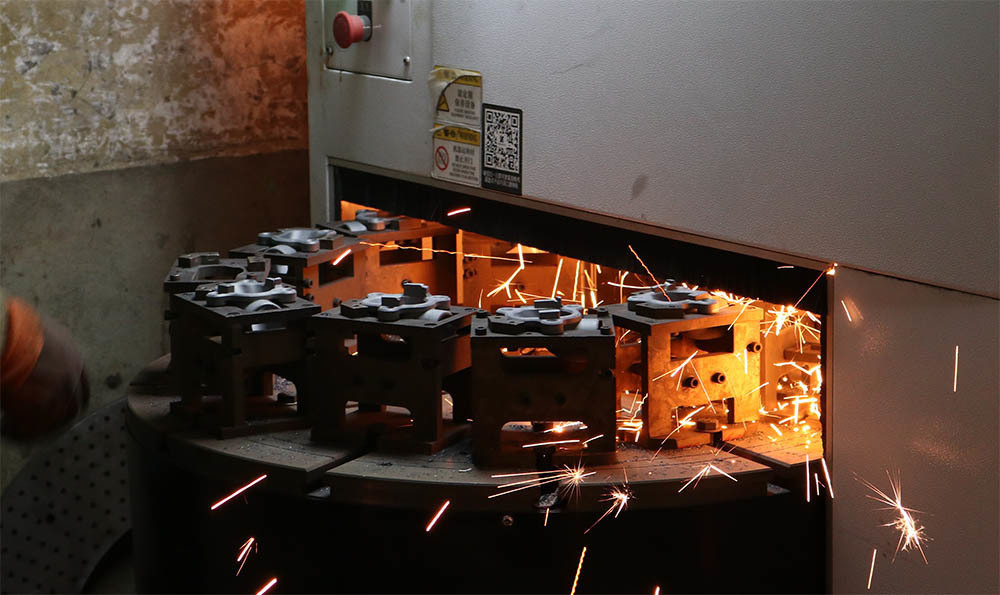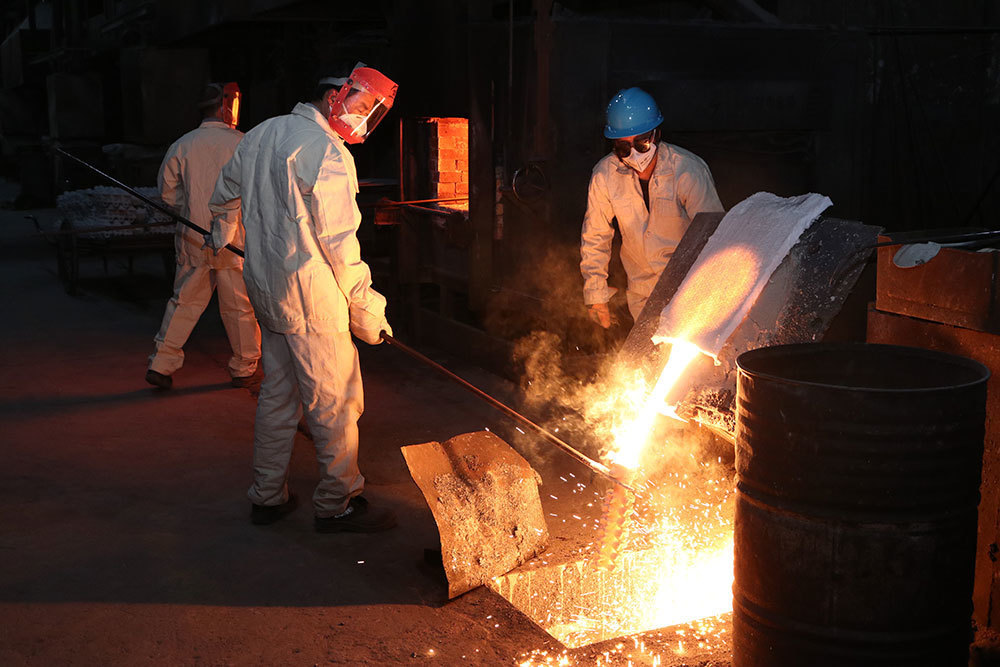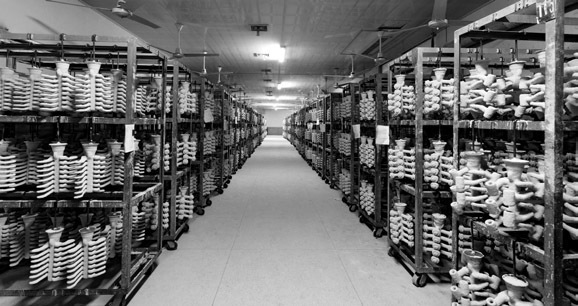2025-05-03
Breaking Boundaries: Investment Casting for Automotive Evolution
Breaking Boundaries: Investment Casting for Automotive Evolution
Table of Contents
1. Introduction to Investment Casting in Automotive Engineering
2. Understanding the Investment Casting Process
3. Advantages of Investment Casting in the Automotive Sector
4. Key Materials Used in Investment Casting for Automotive Applications
5. Investment Casting vs. Traditional Casting Methods
6. Innovations and Future Trends in Investment Casting
7. Case Studies: Successful Implementation of Investment Casting
8. Frequently Asked Questions (FAQs)
9. Conclusion
1. Introduction to Investment Casting in Automotive Engineering
In the rapidly evolving automotive industry, manufacturers are constantly seeking methods to enhance performance while reducing costs. **Investment casting**, also known as lost-wax casting, is emerging as a groundbreaking solution that enables the production of complex, high-precision components. This method allows for intricate designs and lightweight structures, making it particularly valuable in automotive applications. As we delve deeper into the world of investment casting, we will uncover how this technique is breaking barriers and fostering innovation in automotive engineering.
2. Understanding the Investment Casting Process
Investment casting involves several critical steps that ensure the creation of high-quality components. The process starts with creating a wax pattern that replicates the desired part. This pattern is then surrounded by a ceramic shell, which is hardened through heat. Once the shell is solidified, the wax is melted away, leaving a cavity in which molten metal is poured. After cooling, the ceramic shell is broken to reveal the cast part. This method is particularly advantageous for producing **complex geometries** and achieving excellent surface finishes, often requiring minimal machining.
2.1 The Steps of Investment Casting
To further illustrate the investment casting process, let’s break down the individual steps:
- **Pattern Creation**: Wax patterns are produced using precise molds.
- **Shell Building**: Patterns are coated with a fine sand mixture that forms a ceramic shell.
- **Wax Removal**: The shell is heated to melt the wax, creating a hollow cavity.
- **Metal Pouring**: Liquid metal is poured into the shell, filling the cavity.
- **Shell Removal**: After cooling, the ceramic shell is removed, revealing the cast component.
3. Advantages of Investment Casting in the Automotive Sector
Investment casting offers numerous advantages that make it a preferred method in the automotive industry. Here are some key benefits:
3.1 Design Flexibility
The investment casting process allows for **intricate designs** that can accommodate various functionalities within a single component. This capability reduces the need for assembly and enhances the overall performance of the vehicle.
3.2 Weight Reduction
By utilizing lightweight materials, investment casting helps reduce the overall weight of automotive components. Lighter vehicles translate to improved fuel efficiency and reduced emissions, aligning with global sustainability goals.
3.3 Cost Efficiency
Although the initial setup costs may be higher, investment casting can significantly lower manufacturing costs in the long run. The reduction in material waste, combined with fewer required machining operations, leads to a more economical production process.
3.4 Improved Mechanical Properties
Investment casting provides components with superior mechanical properties due to the fine microstructure of the cast metal. This results in enhanced strength, durability, and resistance to wear.
4. Key Materials Used in Investment Casting for Automotive Applications
Various materials are employed in investment casting to meet the specific needs of automotive applications. Commonly used metals include:
4.1 Aluminum Alloys
Aluminum alloys are favored for their lightweight characteristics and excellent corrosion resistance. They are widely used in engine components and structural parts.
4.2 Steel Alloys
Steel alloys offer exceptional strength and toughness, making them ideal for heavy-duty applications such as chassis components and gears.
4.3 Nickel-Based Superalloys
Nickel-based superalloys are crucial in high-temperature applications, such as turbine engines, where performance and reliability are paramount.
5. Investment Casting vs. Traditional Casting Methods
When comparing investment casting to traditional casting methods like sand casting or die casting, several distinctions arise:
5.1 Precision and Tolerance
Investment casting provides superior dimensional accuracy and surface finish, reducing the need for post-processing. In contrast, traditional methods often require additional machining to achieve the desired specifications.
5.2 Production Volume
While traditional casting methods can be more suitable for high-volume production, investment casting excels in producing smaller batches of complex components without compromising quality.
6. Innovations and Future Trends in Investment Casting
The field of investment casting is continuously evolving with technological advancements. Some of the notable innovations include:
6.1 3D Printing Integration
The integration of 3D printing technology allows for rapid prototyping of wax patterns, significantly reducing lead times and improving design flexibility.
6.2 Advanced Materials Development
Research is ongoing to develop new alloys and composite materials that enhance performance and reduce weight, making investment casting more versatile for future automotive applications.
7. Case Studies: Successful Implementation of Investment Casting
Several automotive manufacturers have successfully adopted investment casting to achieve remarkable results:
7.1 Case Study 1: High-Performance Engine Components
A leading automotive brand utilized investment casting to produce a range of engine components, resulting in a 15% weight reduction and a 10% improvement in fuel efficiency.
7.2 Case Study 2: Structural Integrity in Chassis Design
Another manufacturer implemented investment casting for chassis components, significantly enhancing structural integrity while reducing manufacturing costs.
8. Frequently Asked Questions (FAQs)
8.1 What is investment casting?
Investment casting is a manufacturing process that creates precise metal parts using a wax pattern, which is coated in a ceramic shell.
8.2 What are the main advantages of investment casting?
The main advantages include design flexibility, weight reduction, cost efficiency, and improved mechanical properties.
8.3 What materials are commonly used in investment casting?
Common materials include aluminum alloys, steel alloys, and nickel-based superalloys.
8.4 How does investment casting compare to traditional methods?
Investment casting offers superior precision and surface finish but may not be as suitable for high-volume production as traditional methods.
8.5 What are some future trends in investment casting?
Future trends include the integration of 3D printing for rapid prototyping, the development of advanced materials, and enhanced automation in the casting process.
9. Conclusion
Investment casting is undeniably breaking boundaries in the automotive industry, paving the way for innovative designs and efficient manufacturing processes. Its ability to produce complex, lightweight components without sacrificing quality positions it as a critical player in the evolution of automotive engineering. As advancements continue to emerge, investment casting will undoubtedly play a pivotal role in shaping the future of automotive technology, driving performance, sustainability, and design ingenuity to new heights.









